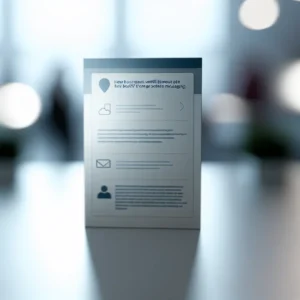Understanding Customer Lifetime Value (CLV) is essential for your business in today’s competitive landscape. This key metric helps you predict the total revenue you can expect from a customer throughout their relationship with your brand. By focusing on CLV, you can refine your customer acquisition and retention strategies more effectively.
By analyzing CLV, you gain insights into long-term profitability, guiding how much to invest in attracting new customers. A higher CLV not only signifies that your customers provide more value over time, but it also supports the development of sustainable business models.
Calculating CLV accurately allows you to make informed decisions that impact your bottom line. This metric goes beyond immediate sales figures, influencing everything from pricing strategies to customer segmentation efforts. Understanding CLV enables you to allocate resources where they will yield the best returns.
Understanding Customer Lifetime Value (CLV)
Customer lifetime value (CLV) represents crucial insights into the total revenue expected from a single customer over their relationship with your business. This metric allows you to consider long-term profitability by guiding decisions on customer acquisition and retention strategies.
For example, Organic Food Co., a healthy food retailer, discovered their customers had a CLV of $900 over three years. By investing in marketing strategies that targeted high-value customer segments, they achieved a 20% reduction in customer acquisition costs and enhanced overall profitability.
To calculate CLV, you typically use the formula: CLV = (Average Purchase Value) × (Average Purchase Frequency) × (Average Customer Lifespan). This straightforward calculation emphasizes the importance of accurately tracking these metrics inside your business.
Businesses that adjust variables within the CLV formula can achieve significant improvements in performance. For instance, when Tech Solutions refined their purchase frequency by incentivizing repeat customers, they saw a 15% increase in overall sales.
A comprehensive understanding of CLV also aids in better financial forecasts. If a segment exhibits a higher CLV, you can allocate additional resources toward marketing efforts tailored to nurture these valuable customers.
The Significance of CLV in Business Metrics
CLV plays a vital role in your overall business strategy. It helps quantify ROI from customer acquisition efforts, allowing you to compare costs against projected lifetime value. For instance, if it costs $150 to acquire a customer with an expected CLV of $600, you can conclude the campaign’s effectiveness and adjust it accordingly.
Health Service Group, a telemedicine provider, found that comprehensively analyzing CLV resulted in a 25% increase in targeted marketing campaign efficiency. The focus on high-value segments led to improved resource allocation and better overall profits.
Additionally, CLV enhances customer segmentation. By identifying high-value customers, you can concentrate your marketing efforts on retaining them. Focusing on these segments increases loyalty and advocacy, contributing to sustainable growth.
Furthermore, CLV forecasts future income streams, vital for your financial strategy. It ensures your marketing budget aligns with estimated returns, allowing for smarter investments in areas that maximize profits.
In modern marketing, technological tools are essential for measuring CLV accurately. Solutions like CRM for WhatsApp help streamline customer interactions, improve data collection, and enhance personalized marketing efforts.
How to Calculate Customer Lifetime Value
Calculating CLV is essential for assessing customer profitability. Follow these steps to determine your CLV accurately.
Step 1: Determine Average Purchase Value
Calculate your average purchase value by dividing total revenue by the total number of transactions over a specific period. If you generate $20,000 in a month from 500 transactions, the average purchase value is $40.
Step 2: Assess Purchase Frequency
Next, find the purchase frequency by dividing total purchases by unique customers. If those 500 purchases come from 200 customers, your purchase frequency is 2.5.
Step 3: Calculate Customer Value
Find customer value by multiplying average purchase value by purchase frequency. In this example, $40 multiplied by 2.5 yields a customer value of $100.
Step 4: Determine Average Customer Lifespan
Estimate the average lifespan of your customers. If the average engagement time is 4 years, you’ll use this figure for your calculations.
Step 5: Calculate Customer Lifetime Value
Multiply customer value by average customer lifespan to find CLV. Using our earlier results: $100 (customer value) multiplied by 4 years equals $400
Factors Affecting Customer Lifetime Value: A Deep Dive
Several factors significantly influence CLV, impacting business performance. Understanding these elements helps you optimize strategies to maximize CLV.
First, customer acquisition cost (CAC) is paramount. Lower CAC generally leads to higher CLV. Focus on strategies to minimize CAC, such as optimizing digital ads and targeting the right audience. Home Decor Hub, a home goods retailer, reduced CAC by 30% through targeted advertising, leading to higher CLV.
Customer retention rates are another vital factor. Maintaining customers improves CLV, necessitating investments in robust CRM tools for effective engagement. Companies that foster loyalty and deliver exceptional service create lasting relationships and drive CLV.
The average purchase value directly affects CLV. Analyze purchasing behavior to identify upsell opportunities. For instance, Fashion Forward increased average purchase value by 20% through effective cross-selling strategies.
Innovative promotions encourage repeat purchases, boosting purchase frequency and therefore CLV. Utilize strategies like exclusive offers or loyalty programs to motivate customers to come back for more. Recognizing timing trends in purchases helps design effective marketing campaigns.
Finally, understanding customer churn rate is critical. High churn rates signal dissatisfaction, making it essential for businesses to gather feedback. Improving customer experience through the insights garnered can significantly enhance your CLV metrics.
Leveraging CLV for Strategic Business Growth
Understanding CLV helps you refine business decisions. Analyzing this metric enables you to create customized marketing strategies that optimize profitability.
By implementing CLV analysis, you allocate resources efficiently. For example, if a specific channel shows high lifetime values, invest more in it. This data-driven approach reduces wasteful spending while amplifying successful campaigns.
Integrating CLV into financial analysis enhances revenue projections. By understanding customer value, you assess project viability and ensure sustainable growth. Rainbow Electronics improved cash flow forecasts by including CLV metrics in their financial assessments.
Additionally, investing in customer retention contributes to higher CLV overall. Build lasting relationships to reduce acquisition costs in the long run. Personalized communication and loyalty programs amplify customer engagement, boosting your CLV.
Finally, using technology like CRM for WhatsApp enhances customer interactions based on CLV insights. Automation and personalization improve customer experience and revenue growth.
Common Pitfalls in CLV Calculation and Interpretation
Accurate CLV calculations are essential, yet common pitfalls can lead to misinterpretations affecting your business metrics.
One frequent mistake is failing to account for customer churn rate accurately. By neglecting churn, businesses can overstate the perceived value of customers.
Businesses also often estimate average customer lifespan inaccurately. Rely on historical data for accurate projections to make sound retention strategy decisions.
Additionally, integrating customer acquisition costs (CAC) is crucial for clarity on profitability. Overlooking CAC can lead to misguided spending.
Only using sales revenue instead of profit can skew CLV understanding. Evaluating net profit gives a clearer picture of customer contributions to overall financial health.
Lastly, failing to segment customers can obscure valuable insights. Customize CLV calculations to recognize differences in purchasing behavior and profitability among customer groups.
In conclusion, understanding CLV is vital for informed business strategies. By avoiding these pitfalls, enhancing your financial analysis, and leveraging tools like a robust CRM for WhatsApp, you can drive sustained profitability and strategic growth.
The Future of Customer Lifetime Value in Business Strategy
Embracing CLV is crucial for enhancing long-term profitability and guiding strategic business decisions. As market dynamics shift, the role of CLV in shaping customer acquisition and retention strategies will intensify.
Integrating CLV into your financial analysis allows for more efficient resource allocation. By prioritizing high-value customers, you can ensure that marketing expenditures are optimized and customer relationships managed effectively.
In today’s digital era, where interactions occur rapidly, utilizing technology becomes imperative. Real-time data integration within CRM systems significantly enhances CLV calculations, allowing for more precise tracking of customer behaviors.
Moreover, advanced data analytics can refine CLV models, providing deeper insights into purchasing patterns and customer segments. Keeping CLV metrics updated based on consumer behavior changes ensures agility in satisfying market demands.
Looking ahead, the future of customer lifetime value in strategy development is rife with opportunity. As businesses recognize the importance of cultivating long-term customer relationships, investing in technologies for detailed financial analysis and metric management will be critical for sustaining growth.









